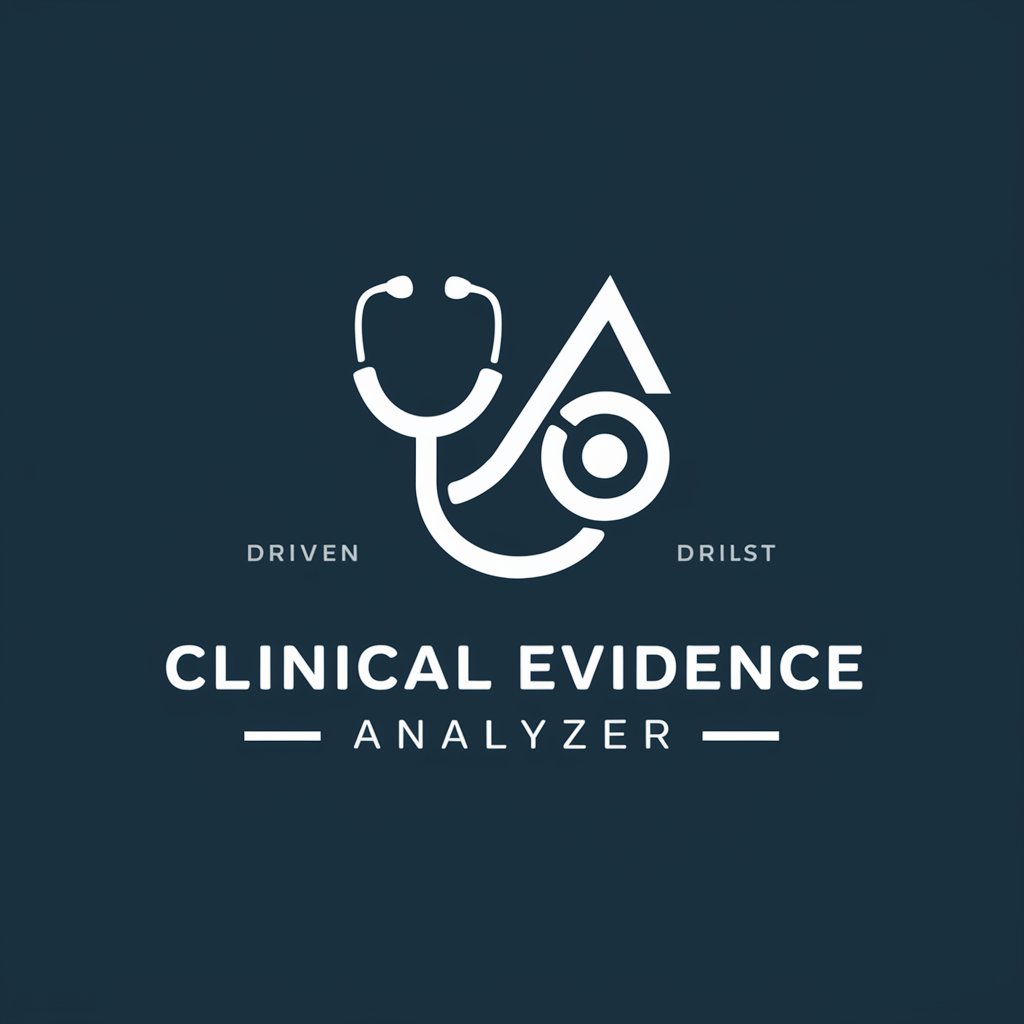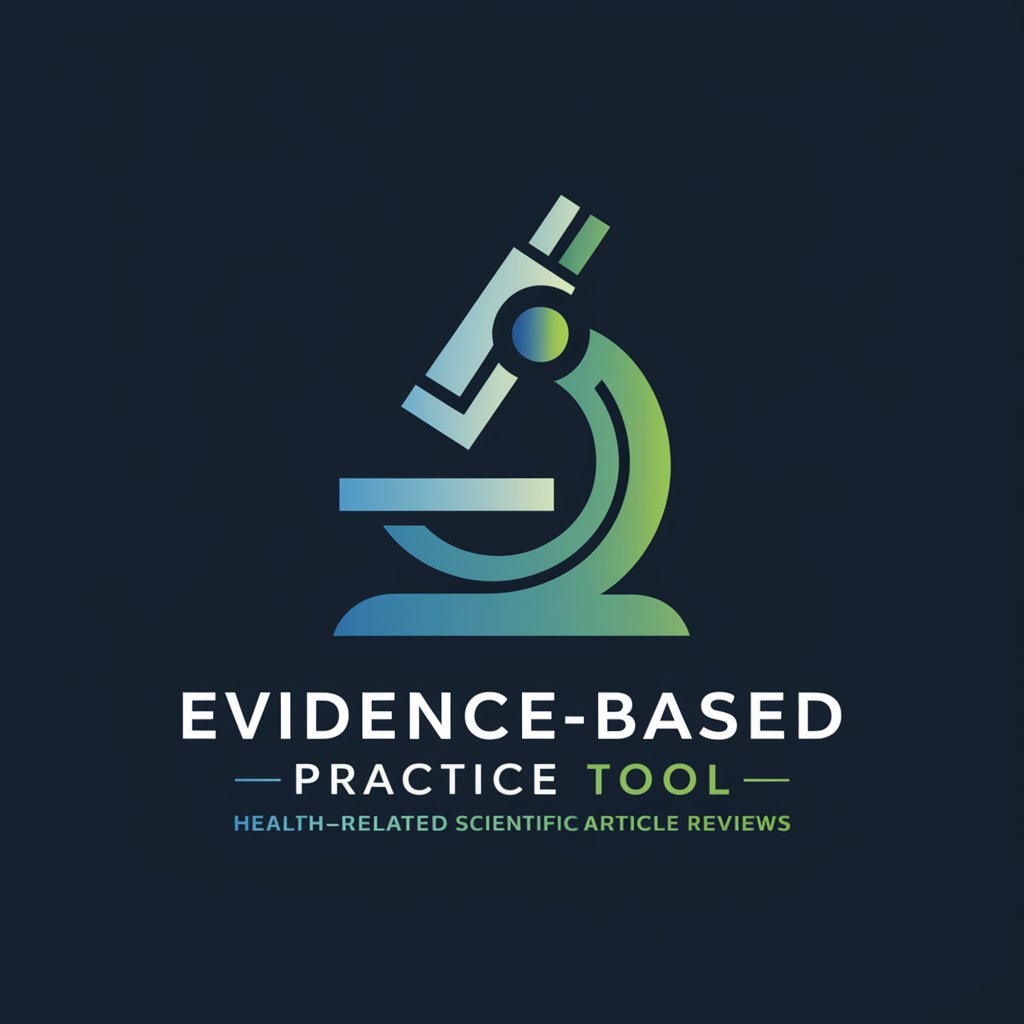
Clinical Evidence Analyzer - Clinical Research Insights

Welcome to Clinical Evidence Analyzer, your guide to understanding clinical research.
Decipher Clinical Studies with AI
Summarize the clinical evidence for...
Analyze the methodology of the study on...
What are the limitations of the research on...
Classify the evidence level in the article about...
Get Embed Code
Introduction to Clinical Evidence Analyzer
The Clinical Evidence Analyzer is designed as a specialized tool to assist in the classification, summarization, and presentation of clinical research articles' evidence levels. It aims to provide healthcare professionals, researchers, and students with a structured, comprehensive analysis of clinical studies, facilitating easier understanding and application of research findings. Through parsing and analyzing clinical articles, it offers a standardized summary that includes a brief introduction, evidence level categorization, and detailed sections on study design, methodology, results, conclusions, and limitations. For example, when given a clinical trial paper, the analyzer can classify it as a 'Level II' evidence due to its randomized controlled trial design, summarizing its objectives, population studied, interventions, outcomes, and the strength of its findings, along with any potential biases or limitations. Powered by ChatGPT-4o。

Main Functions of Clinical Evidence Analyzer
Evidence Level Classification
Example
Determining a study's evidence level, such as classifying an article as Level I (high-quality randomized controlled trial) or Level V (expert opinion).
Scenario
In assessing a new drug's efficacy, the analyzer reviews a randomized controlled trial article, classifying it as Level I evidence, indicating a high level of reliability in its findings.
Summarization of Research Findings
Example
Providing concise summaries of study design, methodology, results, conclusions, and limitations.
Scenario
For a busy clinician seeking to understand the latest findings on hypertension management, the analyzer summarizes key points from a recent study, allowing quick assimilation of its implications for clinical practice.
Critical Analysis of Study Design and Methodology
Example
Critiquing the robustness of the study's design and the appropriateness of its methodological approach.
Scenario
A researcher analyzing studies for a systematic review uses the analyzer to identify potential biases in study designs, enhancing the review's overall quality.
Ideal Users of Clinical Evidence Analyzer Services
Healthcare Professionals
Doctors, nurses, and other clinicians who need to stay updated with the latest research findings but have limited time to read through extensive articles. The analyzer's summaries and evidence classifications help them quickly grasp the relevance and reliability of new studies for clinical practice.
Medical Researchers
Researchers looking for an efficient way to screen literature and evaluate the quality of evidence for their literature reviews or meta-analyses. The analyzer can save time and provide a structured overview of key study characteristics.
Health Sciences Students
Students in medicine, nursing, pharmacy, and other health sciences fields who require assistance in understanding the hierarchy of evidence and in critically appraising clinical research articles for their studies or assignments.

How to Use Clinical Evidence Analyzer
1
Start by visiting yeschat.ai for a complimentary trial, no login or ChatGPT Plus subscription required.
2
Choose the Clinical Evidence Analyzer from the list of available tools to begin analyzing clinical research articles.
3
Upload the clinical research article(s) you wish to analyze. Ensure the documents are in a supported format for accurate analysis.
4
Specify your questions or the type of analysis you seek, such as evidence level classification, study design summary, or results interpretation.
5
Review the generated analysis, which includes a structured summary with evidence level, study design, methodology, results, conclusion, and limitations.
Try other advanced and practical GPTs
FANWAGN Item Listing
Elevating Fan Apparel with AI-Powered Descriptions

LECTOR TACÓGRAFO
Optimize driving compliance with AI

BhriguGpt
Unlock ancient wisdom with AI

Coconut Wisdom
Empowering sustainable business innovation.

My Lawyer Friend Alex
Empowering legal decisions with AI

Fertilizers Farming
Optimize growth with AI-powered organic insights.

최신 의료인공지능 트렌드 정리
Empowering Healthcare with AI Insights

Sakura
Unfiltered Insights at Your Fingertips

English to French pdf translator
Translate PDFs seamlessly with AI

EcoAdvisor GPT
Empowering Sustainable Choices with AI

全球取名
Discover Your Name, Globally Inspired.

Yearly Content and Blog Post Creator GPT
Automate Your Content Creation with AI

Frequently Asked Questions about Clinical Evidence Analyzer
What is the Clinical Evidence Analyzer?
The Clinical Evidence Analyzer is a specialized tool designed to classify, summarize, and present the level of evidence in clinical research articles. It provides structured summaries including study design, methodology, results, and conclusions.
Who can benefit from using the Clinical Evidence Analyzer?
Researchers, clinicians, healthcare professionals, and students in the medical field can benefit from using this tool to quickly understand and utilize the evidence presented in clinical research articles.
Can the Clinical Evidence Analyzer assess the quality of clinical studies?
Yes, it classifies the level of evidence provided by the studies, helping users gauge the reliability and applicability of the research findings.
How does the Clinical Evidence Analyzer handle multiple documents?
Users can upload multiple articles for analysis, and the tool will provide separate, detailed summaries for each document, allowing for efficient review of various studies.
What makes the Clinical Evidence Analyzer unique?
Its ability to provide structured, detailed summaries of clinical research articles with an emphasis on the evidence level makes it a valuable tool for quick and comprehensive analysis.




